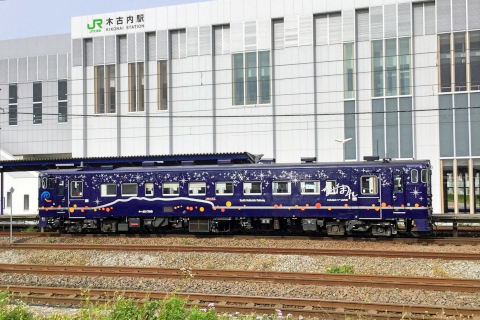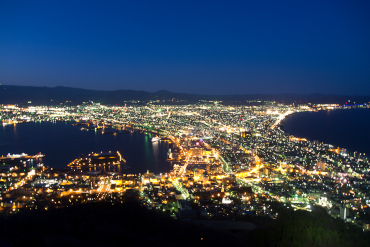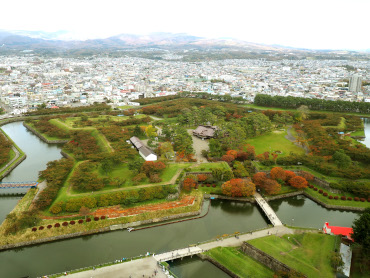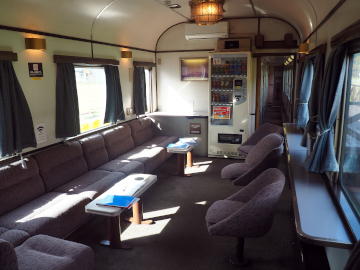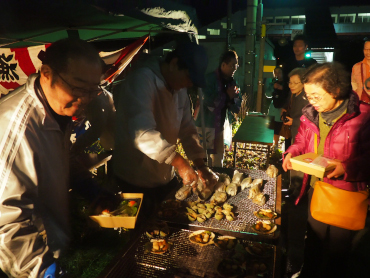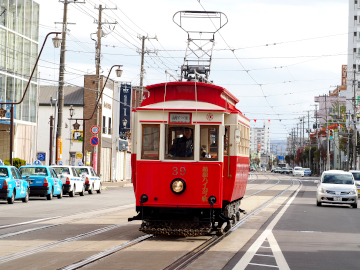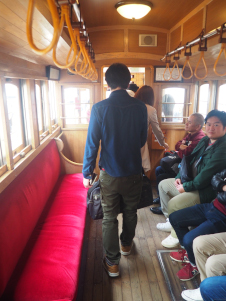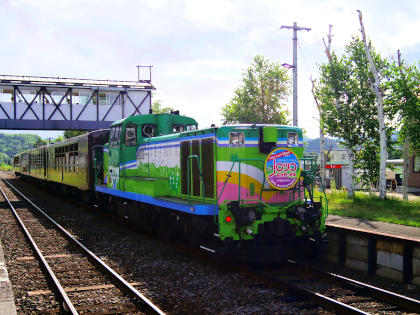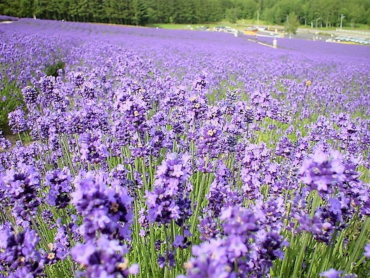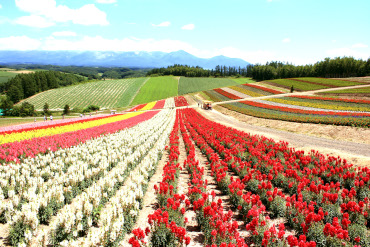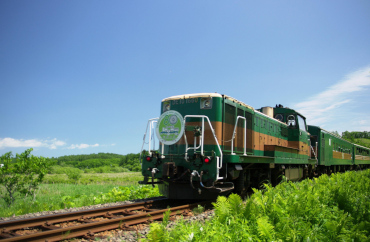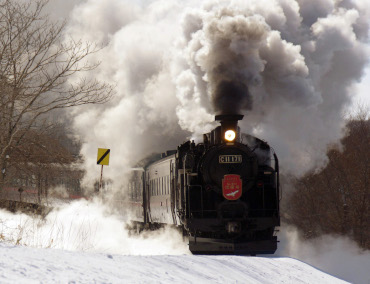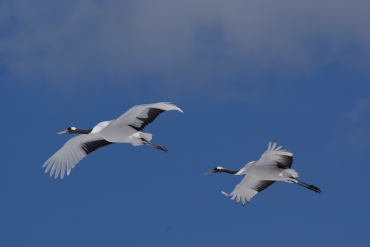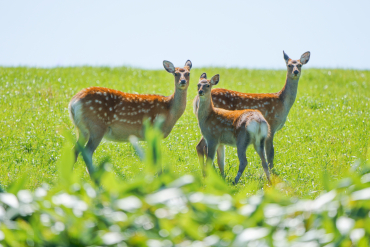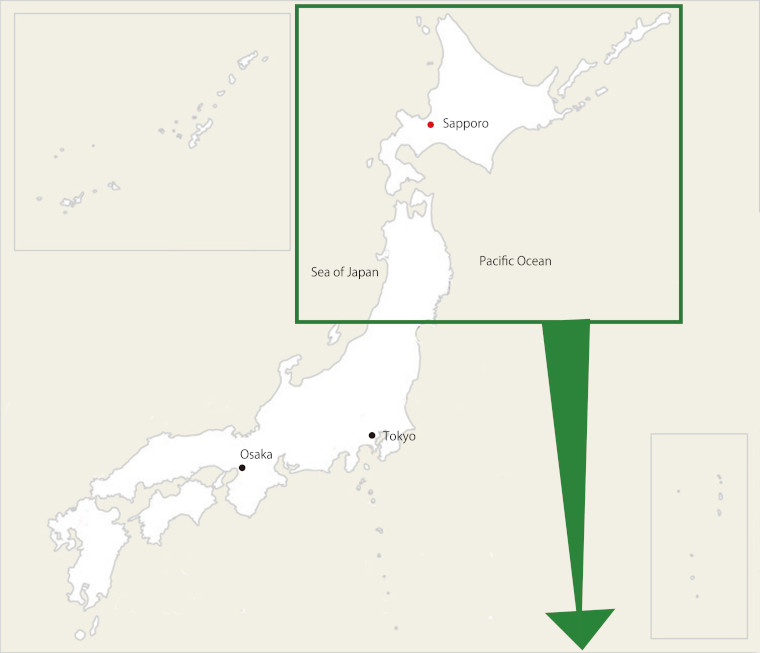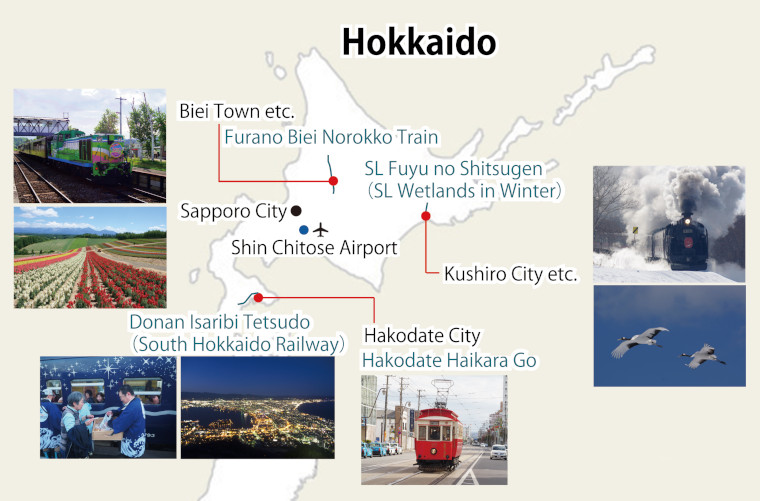Web Japan > Trends in Japan > Food & Travel > Travel on the tourist trains and enjoy Hokkaido to the full
Travel on the tourist trains and enjoy Hokkaido to the full

Donan Isaribi Tetsudo’s "Nagamare Kaikyo" train stopped at Oshima-Tobetsu Station (Hokuto City, Hokkaido)
Taking a tourist train in Japan's northernmost prefecture, Hokkaido, to enjoy the spectacular natural scenery from the window as you travel is becoming popular. Hokkaido is popular with the Japanese but in fiscal year 2017 the number of overseas tourists visiting the region hit a record high of 2,790,000 - an increase of 21.3% on the previous year. There are many places of interest in Hokkaido, but the tourist trains also seem to play a big part in attracting travelers from both Japan and overseas.
The South Hokkaido Railway
Awarded the Grand Prize for Outstanding Rail Journeys
The Donan Isaribi Tetsudo (South Hokkaido Railway) was established jointly by the local municipalities and private enterprise in March 2016 to take over the conventional railway tracks of JR Hokkaido which, with the opening of the Hokkaido Shinkansen (bullet train), ran parallel to the Shinkansen tracks. In the railway’s name, Donan means the southern part of Hokkaido, while Isaribi comes from the open fires used for the fish on the fishing boats that sailed the seas alongside the tracks. This line stretches for 37.8km, connecting Goryokaku Station in Hakodate City with Kikonai Station in Kikonai Town.
With a declining population along its route, the Donan Isaribi Tetsudo was facing financial difficulties and in an attempt to improve the situation, the company decided to start running the "Nagamare Kaikyo" tourist train. In the local dialect, the term "Nagamare" means "to go slowly" or "to take your time." The body of the train is dark blue and decorated with sparkling stars on the side. The inside of the carriage has been cleverly designed on a limited budget and features so-called "big-catch flags", which are banners flown on fishing boats in the hope of catching a good haul of fish; and squid decorations picked up at Hakodate Bay, which is located along the line. Its catch phrase is "Japan's Most Budget Tourist Train."
However the 4 hour return tours from Hakodate to Kikonai, which run every other week on a Saturday afternoon from May until October, are praised by travelers who say that the tours are "wonderful" and "we want to ride on the train again." As a result in fiscal year 2016 it was awarded the grand prize for "Rail Journey of the Year" - an award that recognizes outstanding train journeys.

Inside the "Nagamare Kaikyo" train Keiko Katsuta, an on-board member of the Donan Isaribi Tetsudo staff, gives passengers a guided tour of the sights along the route
After departing from Hakodate, the "Nagamare Kaikyo" arrives in Kamiiso (Hokuto City) about 30 minutes later. On the platform three shop sellers from the nearby shopping street's "Kamiiso Station Shopping Association" stand and sell regional specialties like clam dumplings made of shellfish and biscuit rusks etc., which are so popular they sell out within 10 minutes.
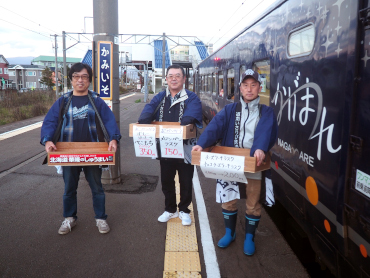
Teru Ito (far left), Chair of the "Kamiiso Station Shopping Association" stands on the platform at Kamiiso Station with other members to sell their wares. They are hoping that next time the passengers will visit their stores directly
Tourist Attractions in Hakodate - the point of departure
Heading from Kamiiso Station to Moheji, the next station, Hakodate Bay spreads out on the left, and inland you can see Mount Hakodate (alt. 334 meters) which is nicknamed "Gagyu-san" (meaning "reclining cow mountain") due to the fact that it looks like a cow that is lying down, and Goryokaku Tower with its 107m high observation deck.
The view at night looking down from Mount Hakodate is so beautiful that it is said to be "a million-dollar night view." The reason you are able to enjoy the "million-dollar night view" from Mount Hakodate is that, while in the past the mountain stood at 348 meters, more than 100 years ago an army shaved off the peak to use as a fortress. Consequently, there is nothing to obstruct the view from the top and you can see the beautiful night view.
At a plaza that is a 5 minute walk from Moheji, there are two passenger cars from the limited express sleeper the "Hokutosei" (Star of Hokuto) that used to run between Tokyo/Ueno and Sapporo but was decommissioned in March 2015. The relocation costs were covered through voluntary donations raised via Crowd Funding and visitors can view the inside of the carriages free of charge on Mondays, Saturdays and national holidays.
The limited express sleeper the "Hokutosei" on display at a plaza in Hokuto City; and some shots of the carriage interiors
One of the highlights of the tour - "isaribi yaki"
When passengers arrive at Kikonai Station, the last stop on the line, they head for "Roadside Station Misogi-no-sato Kikonai" where souvenirs and similar are sold. The place is popular with passengers for its line-up of local merchandise such as "misogi no mai" - a refined rice wine only available for purchase in Kikonai Town - and "Beko-mochi" two-colored sticky rice cakes handmade from ingredients that include brown sugar and rice flour by local farming households.
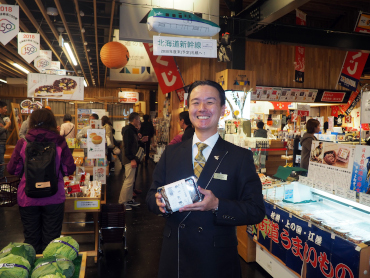
Takashi Asami, a tourist concierge at "Roadside Station Misogi-no-sato Kikonai" (in Kikonai Town) holding a pack of "Beko-mochi"
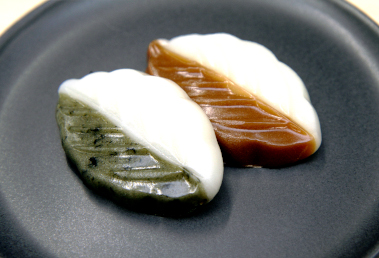
"Beko-mochi" confectionery often eaten at celebrations in Hokkaido and elsewhere. Ideal as a souvenir
After the train leaves Kikonai Station, it arrives at Moheji about 40 minutes later. On the opposite platform, the locals are doing a barbecue and, attracted by the good smell, the passenger go across the footbridge to get some. "isaribi yaki" (isaribi barbecue) is one of the highlights of the tour where seasonal seafood such as whelks and sea urchin and wraps of locally grown vegetables are served.
"isaribi yaki" barbecue is served to passengers from the "Nagamare Kaikyo" train at Moheji Station (Hokuto City) on the Donan Isaribi Tetsudo. Sea urchin and scallops are served on the shells
Passengers bring their freshly prepared dishes into the carriage and the train sets off again. In the train's window, a magical moonlit path reflects off Hakodate Bay at night. A feeling of satisfaction spreads throughout the carriage at the good view and the good food.

Taken from the window of the "Nagamare Kaikyo" train. Against a backdrop of Hakodate City at night, a moonlit path reflects off Hakodate Bay
Other charming Hokkaido railways
The Hakodate Haikara-go (Fashionable Tram)
In Hakodate, on Saturdays and national holidays from April to October, Hakodate City Trams run the "Hakodate Haikara-go (Fashionable Tram)" - an old streetcar that has been restored.
"Hakodate Haikara-go" operated by Hakodate City Trams running in Hokkaido's Hakodate City; and inside the carriage (right-hand photograph)
The Furano-Biei Norocco Train
Also famous among JR Hokkaido’s tourist trains is the Furano-Biei Norocco Train which celebrated its 30th year of operation in 2018. It runs between June and September on a part-time basis. The trolley train is pulled by a diesel locomotive and runs between Asahikawa/Biei and Furano. Inside the trolley train are wooden benches where you can sit and enjoy the view out of the window while soaking in the air. The train cuts through beautiful, hilly land where lavender flowers bloom and runs slowly at speeds of 30 km/hr as it passes through scenic spots along the route, allowing you to really enjoy the scenery.
The lavender fields of Biei Town (left) and the Shikisai Hills
The Kushiro Marsh Norocco Train
Also popular is this tourist train which runs across the Kushiro Marsh, the largest wetland in Japan that covers some 22,000 hectares. From June to October the "Kushiro Marsh Norocco" train is in operation, and in the winter on some days in January-February the "Winter Marsh SL" runs, pulling passenger carriages with a steam locomotive (SL). On the Kushiro marshlands you can often see Hokkaido deer and Japanese cranes and really enjoy the great outdoors.
You really should try a trip to Hokkaido where you can enjoy the great outdoors and lots of great food.
Kushiro Marsh Norocco (left) and the Winter Marsh SL (Source: The Commerce, Labor and Tourism Division of the Hokkaido Government Kushiro General Subprefectural Bureau)
You might get to see some animals that live in Hokkaido. Japanese cranes soaring in the great blue sky (left) and Hokkaido deer

